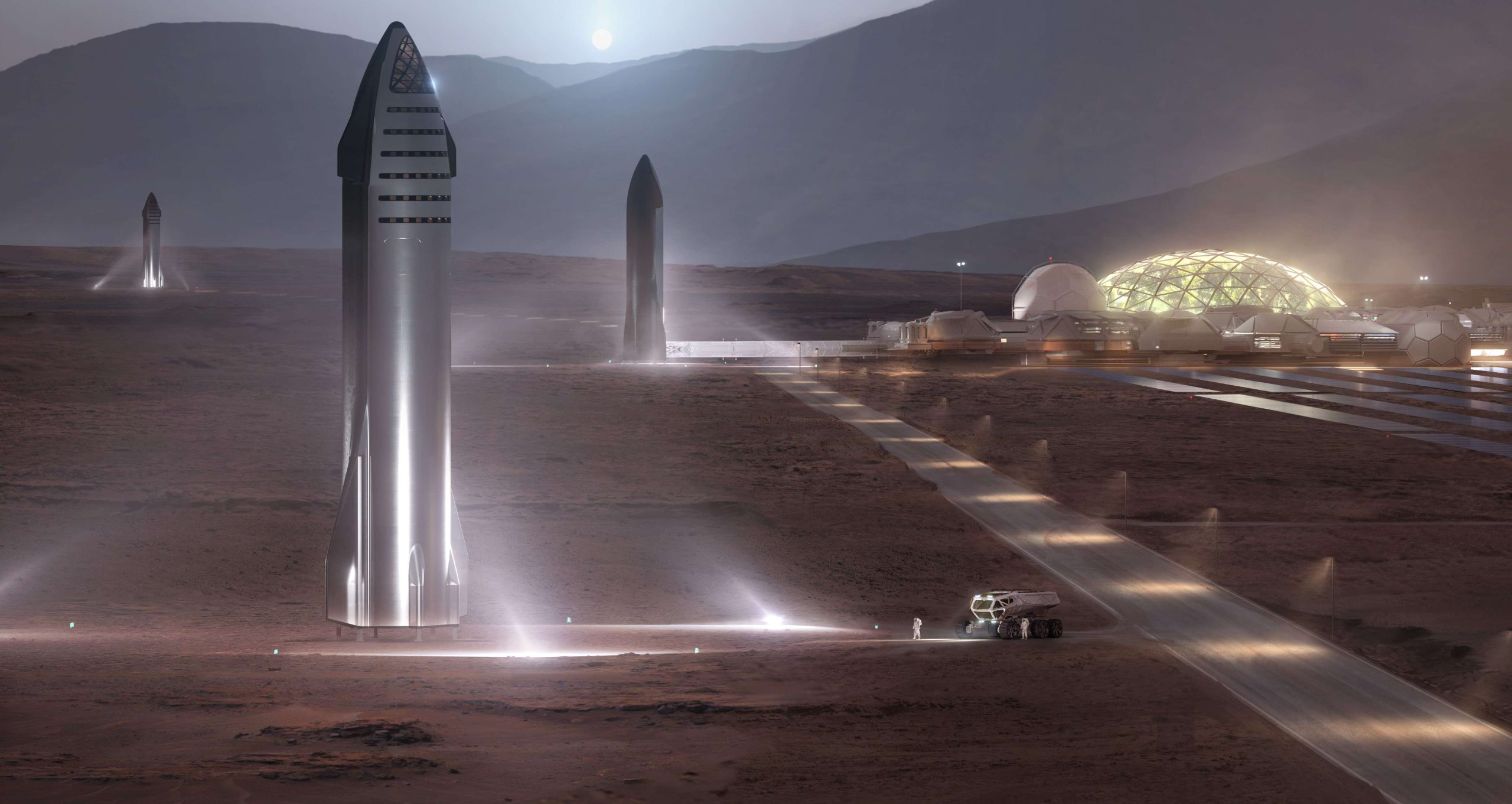
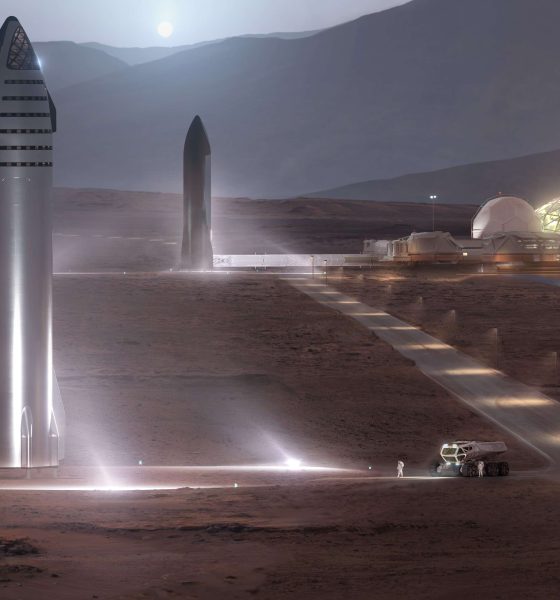
News
SpaceX details plan to build Mars Base Alpha with reusable Starship rockets
For the first time, SpaceX has teamed up with researchers from NASA and several other US institutions to publicly discuss how it plans to use Starship to build Mars Base Alpha.
Save for a handful of comments spread around the periphery of SpaceX and CEO Elon Musk’s main focus, Starship itself, the company and its executives have almost never specifically discussed how the next-generation fully-reusable rocket will be used to create a permanent human presence on Mars. For the most part, that clear focus on near-term hurdles is hard to fault. Half a century of mostly theoretical analysis has made it abundantly clear that a permanent and sustainable extraterrestrial human outpost is impossible without a radical reduction in the cost of access to space. For decades, NASA has studied and studied and studied slight variations of a plan that would cost hundreds of billions of dollars to send a few astronauts to Mars for a few months at a time.
Put simply, without a revolution in space transport, even a temporary presence on Mars where inhabitants are mostly dependent on imported goods is infeasible unless Mars exploration is made a national or international priority on the order of tens of billions of dollars per year. Over the 80-90 years that spaceflight has been seriously pondered, dozens of groups and papers and studies and space agencies have imagined what that revolution might look like and SpaceX is not unique for proposing a solution to that longstanding problem. However, SpaceX is the first of that long list of contenders to propose a solution and both invest significant resources and put hammer to metal in an attempt to make that vision real.
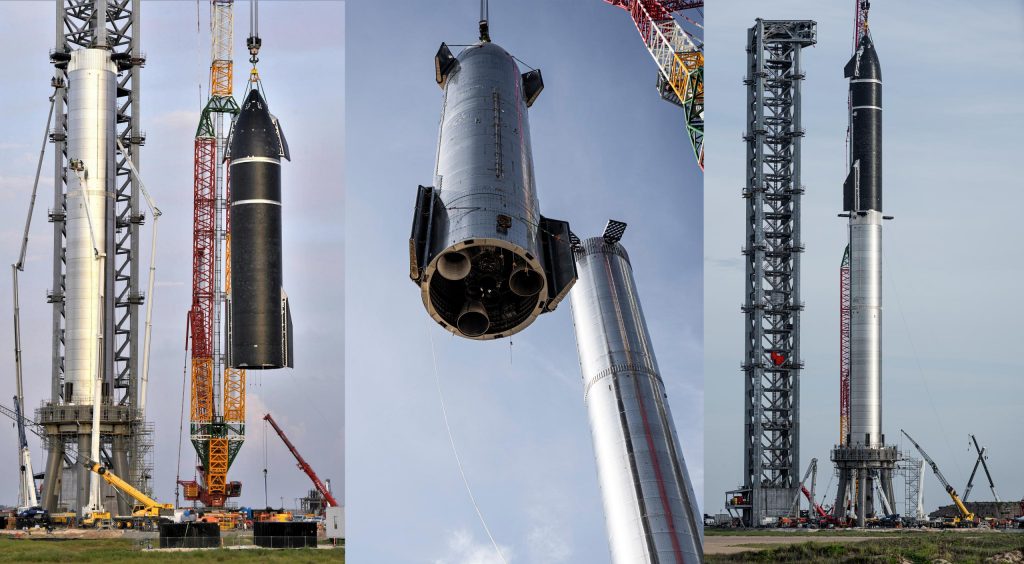
Two years after SpaceX announced its intention to build that next-generation space transportation system, Musk revealed a radical design change and work on the first steel Starship prototypes began. Three years later, SpaceX has completed nine Starship test flights – four brief hops and five flights above 10 km (6 mi). In 2021 alone, SpaceX completed four of those high-altitude flight tests, recovered a high-altitude prototype intact for the first time, built the first orbital-class ship and booster prototypes, began testing that ship, and is nearly finished the first orbital Starship launch site from scratch. In April, SpaceX also secured a $2.9 billion NASA contract to build a human-rated Moon lander variant of Starship.
Put simply, SpaceX – and now NASA with it – has laid a sturdy foundation upon which Starship will almost certainly be realized. A great deal of work remains but SpaceX has more or less surmounted most of the major technical hurdles that towered over Starship/BFR/ITS just a few years ago. A wealth of Starship ground and flight tests have firmly demonstrated that the rocket’s structures, avionics, Raptor engines, exotic methods of descent and landing, and previously unflown fuel of choice are all ready for orbital flight. From then on, SpaceX will still need to prove out Starship’s massive, ceramic, non-ablative heat shield technology; mature orbital rocket refueling techniques and technologies; and finally operationalize all the above to make the rapid launch, reuse, and refueling of the largest rocket in history routine and mundane – something SpaceX has proven to be more than capable of with Dragon and Falcon.
How, then, will SpaceX proceed to the Red Planet?
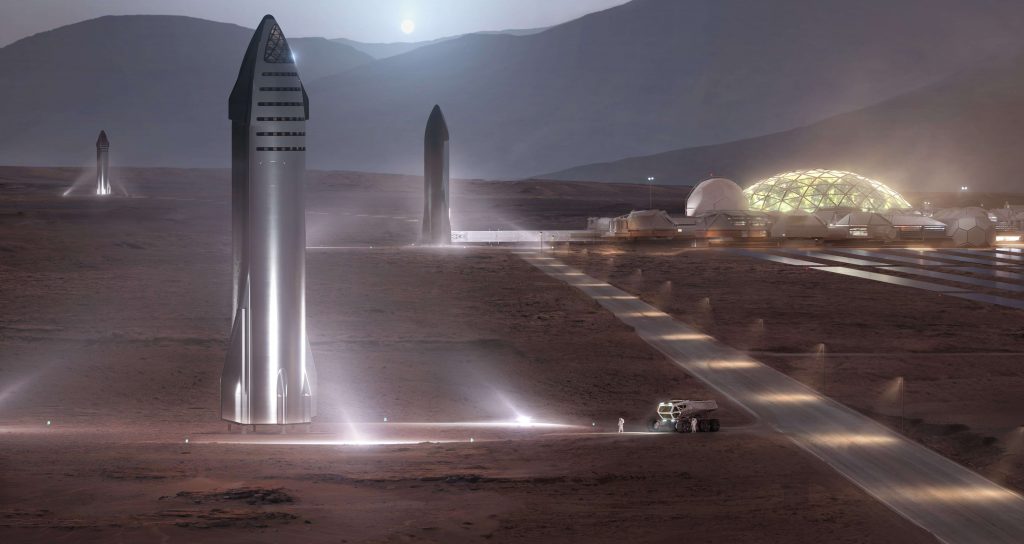
Packing for Mars
With the help of coauthors from NASA Ames, SETI, and half a dozen prestigious US universities and institutes, SpaceX has begun to answer exactly that question in a 2021 whitepaper [PDF] submitted for the National Academies’ next Planetary Science and Astrobiology Decadal Survey. While that survey alone could influence NASA as the agency prepares to outline its next decade of space science and determine the ultimate destination of tens of billions of federal dollars, the consequences of which could be immense, SpaceX also used the paper to describe its plans for early missions to Mars in unprecedented detail.
As has always been the plan, SpaceX will begin the process of constructing sustainable cities on Mars with a few (relatively) simple steps. Likely as soon as the mid-2020s, SpaceX will begin launching uncrewed Starships to Mars to both verify the system’s maturity and readiness and “deliver significant quantities of cargo to the surface in advance of human arrival.” Likely leaning on a wide range of robotics, those early missions will help SpaceX characterize local resources, stage supplies, test technologies for long-duration Martian surface ops, and begin developing infrastructure – with a propellant plant likely the most pressing need. None of that is surprising. However, there’s more.
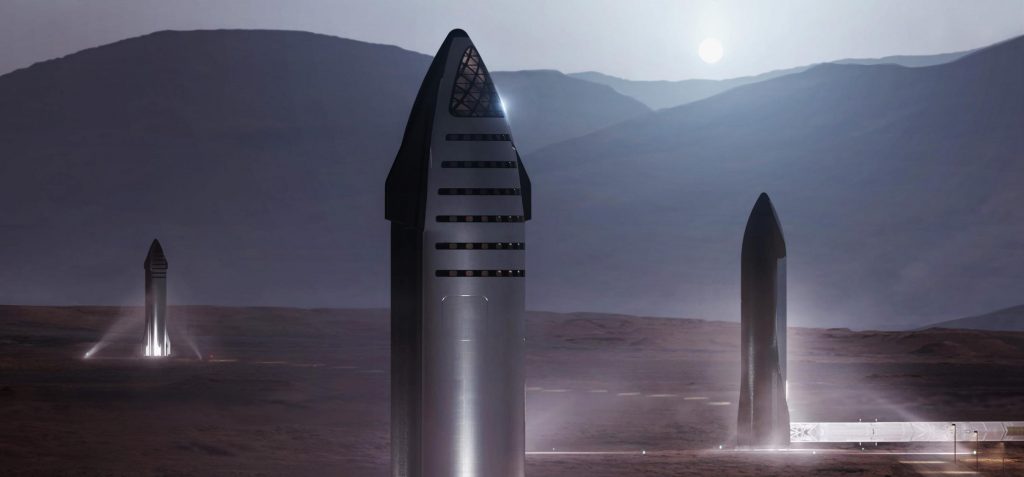
According to the authors, which include several current and former SpaceX engineers, “current SpaceX mission planning [tasks those early uncrewed Starships with delivering] equipment for increased power production, water extraction, LOX/methane production, pre-prepared landing pads, radiation shielding, dust control equipment, exterior shelters for humans and equipment, [and more – all hardware needed to support the first human base.]”
Further, confirming what’s been assumed to be the plan for years, “humans will likely live on [Starships] for the first few years until additional habitats are constructed” and “the first wave of uncrewed Starships can also be relocated and/or repurposed as needed to support the humans on the surface,” serving as “valuable assets for storage, habitation, [scientific laboratories], and a source of refined metal structures and resources.” The paper also states that “SpaceX is aggressively developing Starship to…conduct initial test flights to Mars…as soon as 2022 [or 2024]” and even raises the possibility of SpaceX launching the first Starship(s) to Mars before the rocket’s first lunar mission but then launching a separate lunar mission and landing a different Starship on the Moon while the Marsbound ship or ships are still in transit.
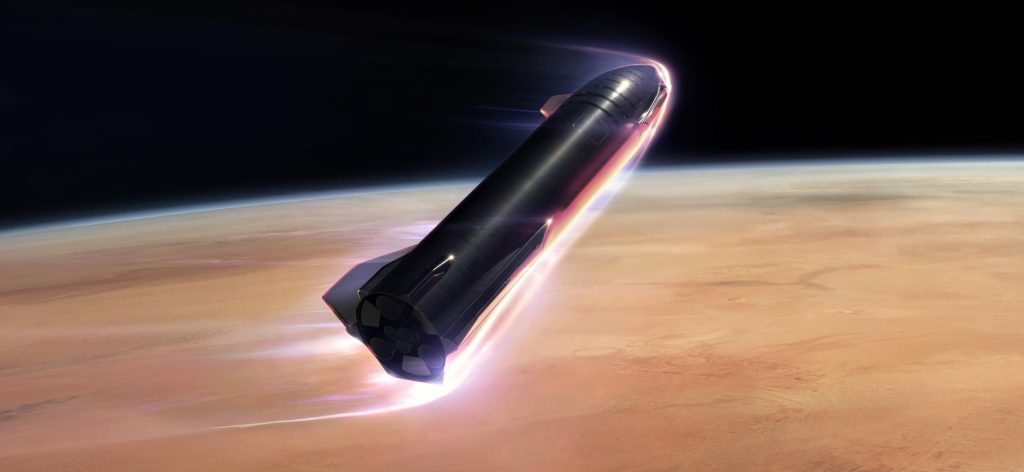
The whitepaper marks the first time that SpaceX (or those familiar with the company’s plans) has properly fleshed out the basics of its first crewed and uncrewed Starship missions to Mars and confirms a great deal of well-informed speculation. Namely, SpaceX appears to intend to pack even the very first Mars-bound ships with supplies. But even if they don’t bring much, the first Martian immigrants – launched in batches of “10-20 people” alongside “100+ metric tons” (~220,000+ lb) of cargo – will reuse all surviving Starships as pre-emplaced habitats, storage tanks, and raw material feedstock. Early cargo will focus on power, water, and propellant production, as well as shelters, radiation shielding, and the construction of prepared landing pads. Unsurprisngly, early residents will likely make the Starships that carry them to Mars their first homes on the surface of the Red Planet, taking advantage of an ~1100m³ (~39,000ft³) pressurized volume already outfitted to keep dozens of people alive and healthy in deep space for months at a time.

News
Tesla stands to win big from potential adjustment to autonomous vehicle limitations
Enabling scale, innovation, and profitability in a sector that is growing quickly would benefit Tesla significantly, especially as it has established itself as a leader.

Tesla stands to be a big winner from a potential easing of limitations on autonomous vehicle development, as the United States government could back off from the restrictions placed on companies developing self-driving car programs.
The U.S. House Energy and Commerce subcommittee will hold a hearing later this month that will aim to accelerate the deployment of autonomous vehicles. There are several key proposals that could impact the development of self-driving cars and potentially accelerate the deployment of this technology across the country.
These key proposals include raising the NHTSA’s exemption cap from 2,500 to 90,000 vehicles per year per automaker, preempting state-level regulations on autonomous vehicle systems, and mandating NHTSA guidelines for calibrating advanced driver assistance systems (ADAS).
Congress, to this point, has been divided on AV rules, with past bills like the 2017 House-passed measure stalling in the Senate. Recent pushes come from automakers urging the Trump administration to act faster amid competition from Chinese companies.
Companies like Tesla, who launched a Robotaxi service in Austin and the Bay Area last year, and Alphabet’s Waymo are highlighted as potential beneficiaries from lighter sanctions on AV development.
The NHTSA recently pledged to adopt a quicker exemption review for autonomous vehicle companies, and supporters of self-driving tech argue this will boost U.S. innovation, while critics are concerned about safety and job risks.
How Tesla Could Benefit from the Proposed Legislation
Tesla, under CEO Elon Musk’s leadership, has positioned itself as a pioneer in autonomous driving technology with its Full Self-Driving software and ambitious Robotaxi plans, including the Cybercab, which was unveiled in late 2024.
The draft legislation under consideration by the U.S. House subcommittee could provide Tesla with significant advantages, potentially transforming its operational and financial landscape.
NHTSA Exemption Cap Increase
First, the proposed increase in the NHTSA exemption cap from 2,500 to 90,000 vehicles annually would allow Tesla to scale up development dramatically.
Currently, regulatory hurdles limit how many fully autonomous vehicles can hit the roads without exhaustive approvals. For Tesla, this means accelerating the rollout of its robotaxi fleet, which Musk envisions as a network of millions of vehicles generating recurring revenue through ride-hailing. With Tesla’s vast existing fleet of over 6 million vehicles equipped with FSD hardware, a higher cap could enable rapid conversion and deployment, turning parked cars into profit centers overnight.
Preempting State Regulations
A united Federal framework would be created if it could preempt State regulations, eliminating the patchwork of rules that currently complicate interstate operations. Tesla has faced scrutiny and restrictions in states like California, especially as it has faced harsh criticism through imposed testing limits.
A federal override of State-level rules would reduce legal battles, compliance costs, and delays, allowing Tesla to expand services nationwide more seamlessly.
This is crucial for Tesla’s growth strategy, as it operates in multiple markets and aims for a coast-to-coast Robotaxi network, competing directly with Waymo’s city-specific expansions.
Bringing Safety Standards to the Present Day
Innovation in the passenger transportation sector has continued to outpace both State and Federal-level legislation, which has caused a lag in the development of many things, most notably, self-driving technology.
Updating these outdated safety standards, especially waiving requirements for steering wheels or mirrors, directly benefits Tesla’s innovative designs. Tesla wanted to ship Cybertruck without side mirrors, but Federal regulations required the company to equip the pickup with them.
Cybercab is also planned to be released without a steering wheel or pedals, and is tailored for full autonomy, but current rules would mandate human-ready features.
Streamlined NHTSA reviews would further expedite approvals, addressing Tesla’s complaints about bureaucratic slowdowns. In a letter written in June to the Trump Administration, automakers, including Tesla, urged faster action, and this legislation could deliver it.
In Summary
This legislation represents a potential regulatory tailwind for Tesla, but it still relies on the government to put forth action to make things easier from a regulatory perspective. Enabling scale, innovation, and profitability in a sector that is growing quickly would benefit Tesla significantly, especially as it has established itself as a leader.
News
Nvidia CEO Jensen Huang explains difference between Tesla FSD and Alpamayo
“Tesla’s FSD stack is completely world-class,” the Nvidia CEO said.

NVIDIA CEO Jensen Huang has offered high praise for Tesla’s Full Self-Driving (FSD) system during a Q&A at CES 2026, calling it “world-class” and “state-of-the-art” in design, training, and performance.
More importantly, he also shared some insights about the key differences between FSD and Nvidia’s recently announced Alpamayo system.
Jensen Huang’s praise for Tesla FSD
Nvidia made headlines at CES following its announcement of Alpamayo, which uses artificial intelligence to accelerate the development of autonomous driving solutions. Due to its focus on AI, many started speculating that Alpamayo would be a direct rival to FSD. This was somewhat addressed by Elon Musk, who predicted that “they will find that it’s easy to get to 99% and then super hard to solve the long tail of the distribution.”
During his Q&A, Nvidia CEO Jensen Huang was asked about the difference between FSD and Alpamayo. His response was extensive:
“Tesla’s FSD stack is completely world-class. They’ve been working on it for quite some time. It’s world-class not only in the number of miles it’s accumulated, but in the way it’s designed, the way they do training, data collection, curation, synthetic data generation, and all of their simulation technologies.
“Of course, the latest generation is end-to-end Full Self-Driving—meaning it’s one large model trained end to end. And so… Elon’s AD system is, in every way, 100% state-of-the-art. I’m really quite impressed by the technology. I have it, and I drive it in our house, and it works incredibly well,” the Nvidia CEO said.
Nvidia’s platform approach vs Tesla’s integration
Huang also stated that Nvidia’s Alpamayo system was built around a fundamentally different philosophy from Tesla’s. Rather than developing self-driving cars itself, Nvidia supplies the full autonomous technology stack for other companies to use.
“Nvidia doesn’t build self-driving cars. We build the full stack so others can,” Huang said, explaining that Nvidia provides separate systems for training, simulation, and in-vehicle computing, all supported by shared software.
He added that customers can adopt as much or as little of the platform as they need, noting that Nvidia works across the industry, including with Tesla on training systems and companies like Waymo, XPeng, and Nuro on vehicle computing.
“So our system is really quite pervasive because we’re a technology platform provider. That’s the primary difference. There’s no question in our mind that, of the billion cars on the road today, in another 10 years’ time, hundreds of millions of them will have great autonomous capability. This is likely one of the largest, fastest-growing technology industries over the next decade.”
He also emphasized Nvidia’s open approach, saying the company open-sources its models and helps partners train their own systems. “We’re not a self-driving car company. We’re enabling the autonomous industry,” Huang said.
Elon Musk
Elon Musk confirms xAI’s purchase of five 380 MW natural gas turbines
The deal, which was confirmed by Musk on X, highlights xAI’s effort to aggressively scale its operations.

xAI, Elon Musk’s artificial intelligence startup, has purchased five additional 380 MW natural gas turbines from South Korea’s Doosan Enerbility to power its growing supercomputer clusters.
The deal, which was confirmed by Musk on X, highlights xAI’s effort to aggressively scale its operations.
xAI’s turbine deal details
News of xAI’s new turbines was shared on social media platform X, with user @SemiAnalysis_ stating that the turbines were produced by South Korea’s Doosan Enerbility. As noted in an Asian Business Daily report, Doosan Enerbility announced last October that it signed a contract to supply two 380 MW gas turbines for a major U.S. tech company. Doosan later noted in December that it secured an order for three more 380 MW gas turbines.
As per the X user, the gas turbines would power an additional 600,000+ GB200 NVL72 equivalent size cluster. This should make xAI’s facilities among the largest in the world. In a reply, Elon Musk confirmed that xAI did purchase the turbines. “True,” Musk wrote in a post on X.
xAI’s ambitions
Recent reports have indicated that xAI closed an upsized $20 billion Series E funding round, exceeding the initial $15 billion target to fuel rapid infrastructure scaling and AI product development. The funding, as per the AI startup, “will accelerate our world-leading infrastructure buildout, enable the rapid development and deployment of transformative AI products.”
The company also teased the rollout of its upcoming frontier AI model. “Looking ahead, Grok 5 is currently in training, and we are focused on launching innovative new consumer and enterprise products that harness the power of Grok, Colossus, and 𝕏 to transform how we live, work, and play,” xAI wrote in a post on its website.








